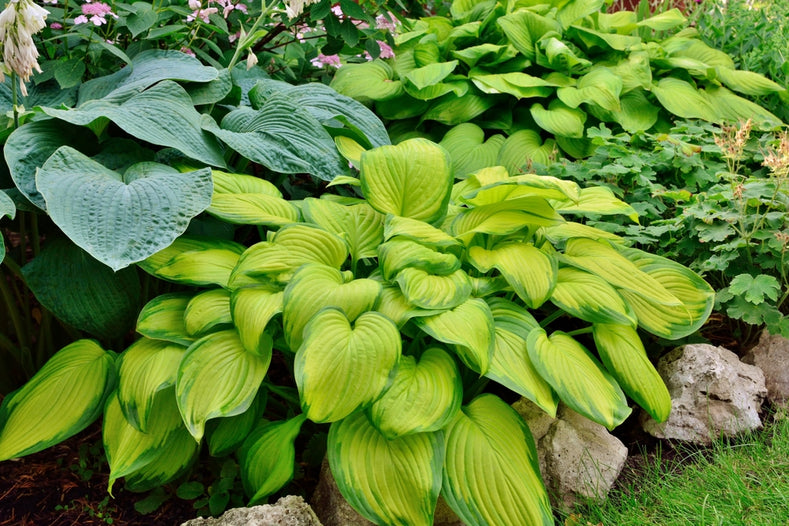Hostas are shade-loving perennials that can transform any shaded garden into a greenscape that looks vibrant from spring to autumn. Setting them apart from other perennials is the rich and colourful foliage that they are mostly chosen for. In addition to their thick bouquet of leaves, Hostas also bloom soft bell-shaped flowers in the summer. Here at DutchGrown, we have put together a comprehensive guide to get you started and help you get the most out of your Hostas.
How to Plant Hostas
To get the most out of your Hostas, select a location in your garden that receives partial shade. Hostas thrive in areas with dappled sunlight or where they are shielded from direct sunlight during the hottest part of the day.
Hostas prefer rich and fertile soil. Before planting, prepare the soil by adding organic matter such as compost or well-rotted manure. This helps improve drainage and provides nutrients for healthy growth. Ensure that the soil is well-draining to prevent waterlogged conditions.
Dig a hole for each Hosta plant, spacing them 8 to 10 centimetres apart. The hole should be slightly larger than the plant's root ball. Place the Hosta in the hole and make sure it is positioned at the same level it was in the nursery pot. Planting them 3 centimetres below the soil surface helps prevent the crown from rotting. Backfill the hole with soil and gently firm it around the plant.
Hostas require consistent moisture to thrive. Water the plants regularly, especially during dry periods, to keep the soil evenly moist. Avoid overwatering, as this can lead to root rot. Mulching around the base of the plants with organic matter can help retain moisture and suppress weeds.
- Choose a suitable spot with partial shade
- Prepare rich, well-draining soil
- Dig holes spaced 8 to 10 centimetres apart
- Water regularly, keeping the soil moist
Hostas can also be grown in containers, which allows for greater versatility in garden design. Choose small or medium-sized Hostas for pots, as they are more suitable for limited space. Use a well-draining potting mix and ensure the container has drainage holes. Place the container in a partially shaded area and water regularly to maintain soil moisture.

Aftercare
Hostas are generally low-maintenance plants, but a few tasks can keep them looking their best. Remove any dead or yellowing leaves to promote better air circulation and prevent disease. Slugs and snails can be common pests, so consider using organic pest control methods or physical barriers to protect your plants. In autumn, cut back the foliage after it has died back naturally.
Follow these steps to grow beautiful and thriving Hostas, and enjoy their lush foliage and delicate flowers bringing life and colour to your shaded spaces.

